Glyko Karydaki, is a Greek fruit preserve of small (or young) walnuts and it is one of the best Greek traditional spoon sweets.
The spoon sweet is made with unripe green walnuts around the end of Spring or early summer, when the inner shell (the endocarp), has not become hard.
Karydaki (pr. kah-ree-DHA-kee) in Greek, is the diminutive of karydia which are the walnuts when they are still green and tender.
The procedure for making it is a bit labour intensive but it is worth while.
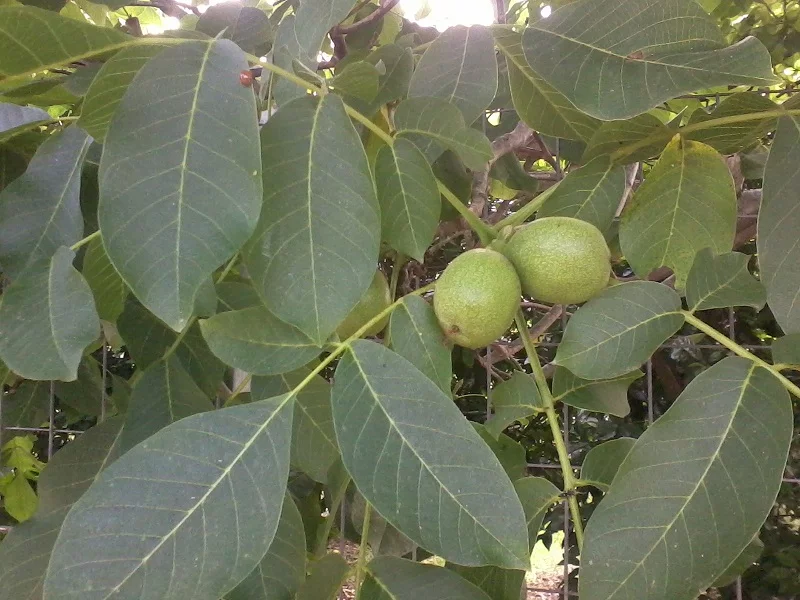
What time of the year can I make the preserve?
Use the tenderest ones you can find, the older they are the harder they tend to be. They are best picked when they just come out, end of May till mid-June.
In places with high altitude they grow and ripen a bit later.
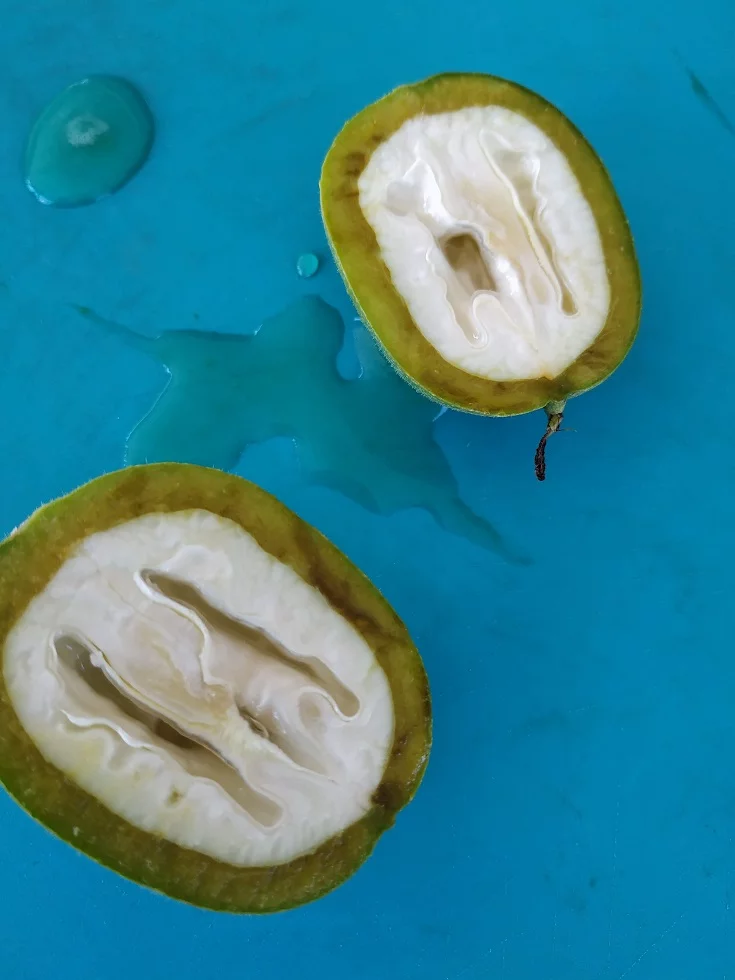
Cut the walnut in the middle and if it is hard to cut with a knife, it means that the shell inside (endocarp) has hardened. In that case you can use the walnuts to make Walnut Liqueur.
Note: to those in the Southern Hemisphere: you’ll want to pick your walnuts in December.
How to Peel the walnuts
The most time consuming part of making glyko karydaki, is peeling it.
It takes about 1 minute to peel each fruit.
You can peel “karydaki” or green walnuts use a pairing knife to peel them or a vegetable peeler, which is preferable as with a peeler you can peel the fruit evenly.
I found out that putting the fruit on a skewer, helps speed up the procedure of peeling each walnut and reduces the time to almost half.
Some people do not peel the fruit before peeling it and when it becomes soft after boiling, they scrub away the peel. However, I have not tested this method.
Removing the bitterness
Fresh walnuts are very bitter, so after boiling them once for only three minutes, you put them in water, which you have to change at least twice a day for six days. If you change the water more often then you can reduce the time before its preparation. .
During this process, they start turning black, so don’t worry as this is normal.
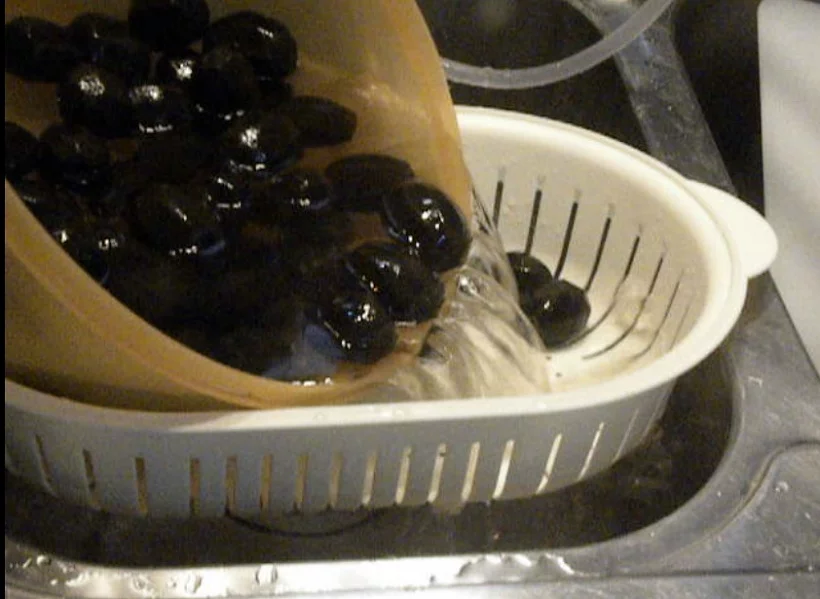
Why use Pickling Lime
As for most spoon sweets the fruit is soaked in pickling lime (asvesti) which helps them stay crunchy.
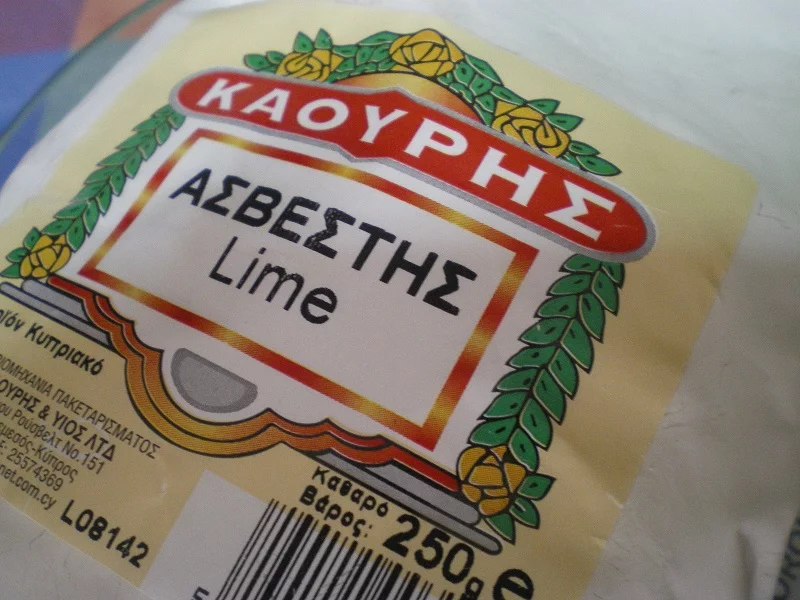
When my mother used to make spoon sweets and her mother before, they used to go to constructions and get some quick lime but you can find some in your local supermarkets or you can get some pickling lime on the internet.
I want to say here that it is better to use pickling lime but if you can’t find any you can still make the preserve without it.
Pickling lime just makes it more crunchy.
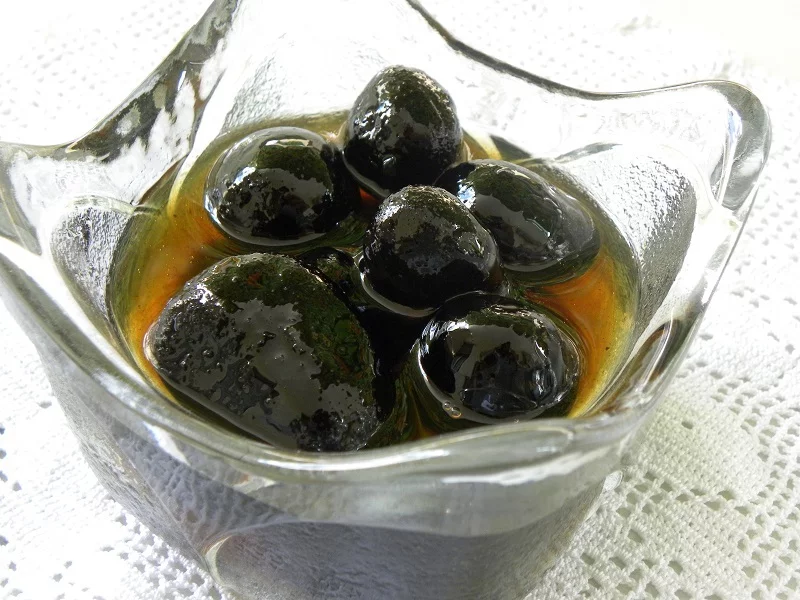
Procedure of making Glyko Karydaki
Peel the green walnuts (see video).
(Be sure to wear latex gloves, otherwise your hands will go black. It takes a few days for the dye to wash off).
Poke them with a skewer.
Put them in a bowl with water to cover them.
Change the water twice a day for six days.
Dissolve pickling lime with water and put the walnuts in the lime water for 3 – 4 hours.
Wash thoroughly, two or three times.
Boil the walnuts, gradually, until soft.
(To know if the walnuts are ready, you should make the needle test. Take a skewer or a needle and prick the walnuts, if the needle passes through the walnut and comes out easily, then the walnuts are ready for the final process and syrup).
In the meantime, blanch and roast the almonds and sterilize the jars.
When the walnuts cool, add a clove and a roasted almond in each.
Put them in water with lemon juice for 1 hour. Discard the water.
Add the sugar (or sugar and honey), cinnamon stick and water and mix until the sugar dissolves.
Boil until the temperature reaches 105o C. If you don’t have a thermometre, there are also instructions for the old-fashioned way of doing the preserve.
Add the leftover lemon juice.
Store in sterilized jars.
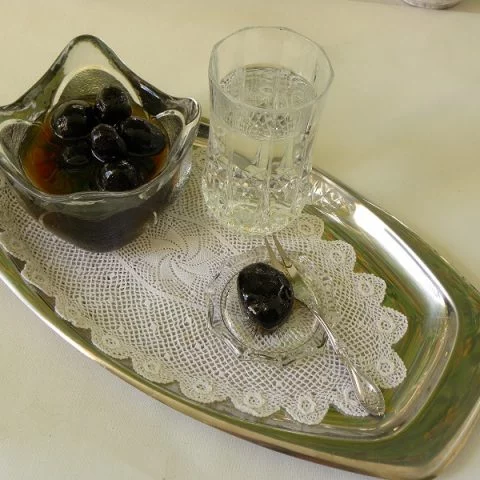
Glyko Karydaki (Green Walnuts Preserve)
Karydaki, which means young walnut, is one of the best Greek traditional spoon sweets The preserve is made with unripe green walnuts at the end of Spring.
Ingredients
- 2 kilos (about 50) big, fresh green Walnuts
- Pickling lime and water to cover them (1 heaped tablespoon lime for every litre of water)
- 1 cup lemon juice, divided. Reserve 1/4 cup lemon to add at the end
- 1 kilos sugar
- 5 cups water
- 1 piece of cinnamon stick
- 6 - 7 cloves
- 2 - 3 fragrant geranium leaves (optional)
- 50 blanched and roasted almonds
Instructions
- Thinly peel the outer skin of the walnuts with a sharp knife or a vegetable peeler (watch video). Be sure to wear latex gloves, otherwise your hands will go black It takes a few days for the dye to wash off.
- Cut off the top part where the fruit is attached to the tree, as it is woody.
- Take a skewer or a knitting needle and prick the walnuts, horizontally and vertically and put them in a bowl with water.
- Change the water for six days, once in the morning and once in the evening.
- On the sixth day, drain the walnuts and put some pickling lime (‘asvesti') in the bowl with water and mix.
- Put the walnuts in the lime water and let them soak for 3 - 4 hours. (This is optional but it helps to keep the walnuts firm).
- Wash the walnuts thoroughly, two or three times, and then put them into a large pot with water to cover them.
- Boil for 3 minutes and discard the water.
- Boil again for 2 -3 minutes, and again drain and put cold water.
- Boil for a third time until soft. Drain and add cold water.
- (To know if the walnuts are ready, you should make the needle test. Take a skewer or a needle and prick the walnuts, if the needle passes through the walnut and come out easily, then the walnuts are ready for the final process and syrup).
- In the meantime, put the blanched almonds in a baking tray and roast them for 15 - 20 minutes. Set aside to cool. While the oven is hot you can simultaneously sterilize the jars.
- When the walnuts are soft, add the lemon juice.
- Leave them in the water for 1 hour. This will make them crunchy and shiny.
- Drain them and put them back in the pot and add the sugar, (and/or honey) water and spices. (Part of the sugar can be substituted with honey)
- Leave them for a while for the sugar to dissolve and then boil the preserve until the temperature reaches 105o C.
- Add the leftover lemon juice and remove from the heat.
- When it cools, store in clean and sterilized jars
- Store in a cupboard.
Notes
If you do not have a thermometer, use this method:
After the sugar dissolves, boil them for 3 - 4 minutes. Remove from heat.
Repeat this boiling procedure 6 - 8 times (twice a day). Check to see if the syrup has thickened.
Add the remaining lemon juice.
At no time should you put the lid on the saucepan during the whole procedure..
Allow to cool in the pot and then store in clean and dry sterilized jars.
Nutrition Information
Yield 50 Serving Size 1Amount Per Serving Calories 342Total Fat 26gSaturated Fat 2gTrans Fat 0gUnsaturated Fat 22gCholesterol 0mgSodium 4mgCarbohydrates 26gFiber 3gSugar 21gProtein 6g
Fruit Preserves (Glyka tou Koutaliou)
Fruit preserves, called "glyka tou koutaliou", served in little plates, are an inherent part of Greek culture, where they are offered to guests, as an act of hospitality. Almost any fruit, even vegetables, flowers and nuts can be made into a preserve.
Here is a selection of my favourite fruit preserves.
Glyko Karydaki - Fresh Walnuts Preserved in Syrup
Karydaki, which means young walnut, is one of the best Greek traditional spoon sweets.  The preserve is made with unripe green walnuts at the end of Spring.
Chestnut Preserve (Glyko Kastano) and Marrons Glacés
Chestnut Preserve (candied chestnuts) or Marrons Glacés, are a wonderful winter treat and a perfect gift during Christmas or other occasions.
Glyka tou koutaliou (Greek Spoon Sweets)
Preserve your fruit, vegetables or nuts! See how to make fruit preserves with these tips and recipes.
How to fix Spoiled Fruit Preserves
If your fruit preserves or jams have mildew or if the sugar has crystalized, don't throw them away as these can be easily fixed.
PIN FOR LATER
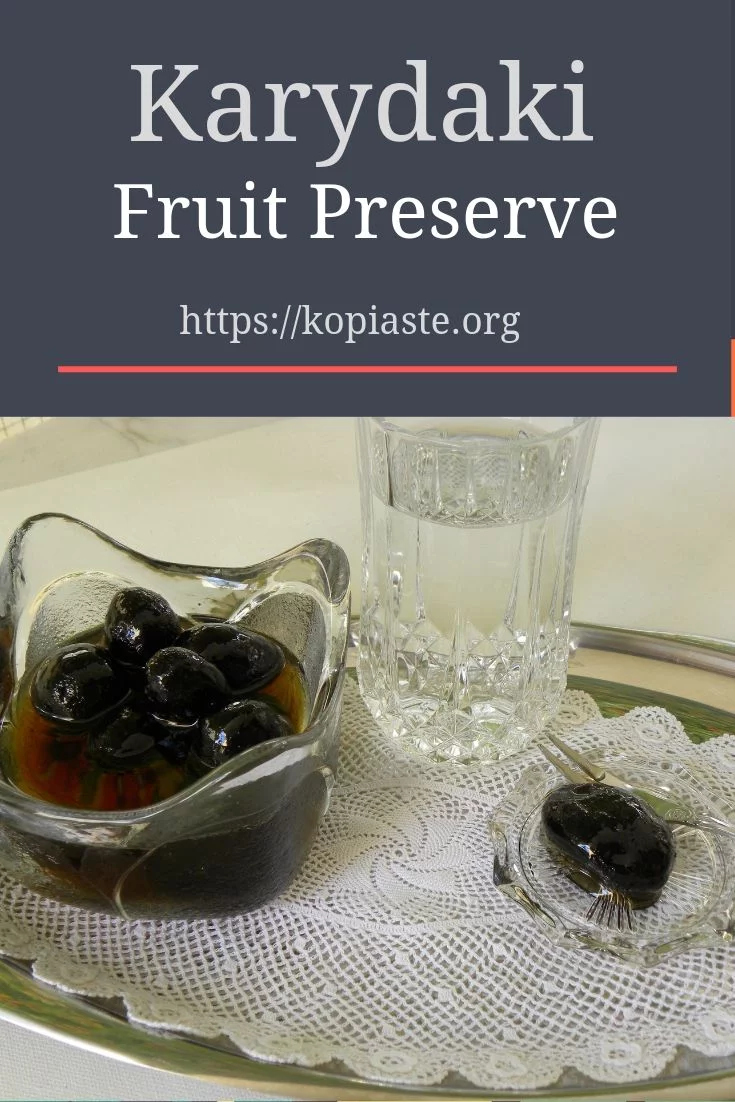
Kopiaste and Kali Orexi,


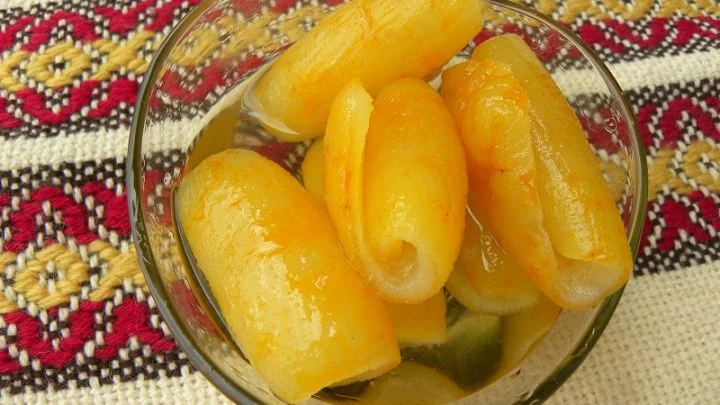
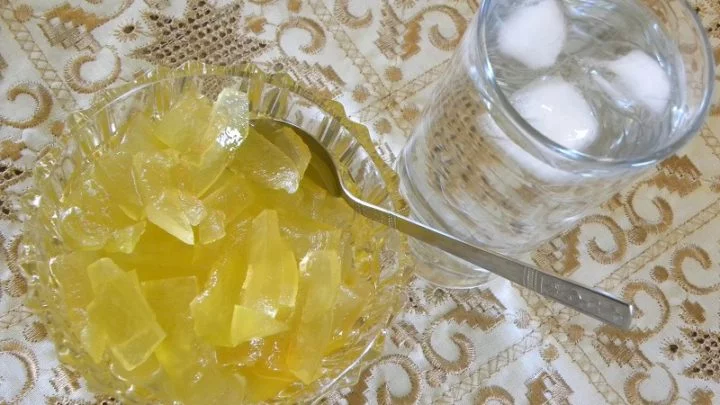
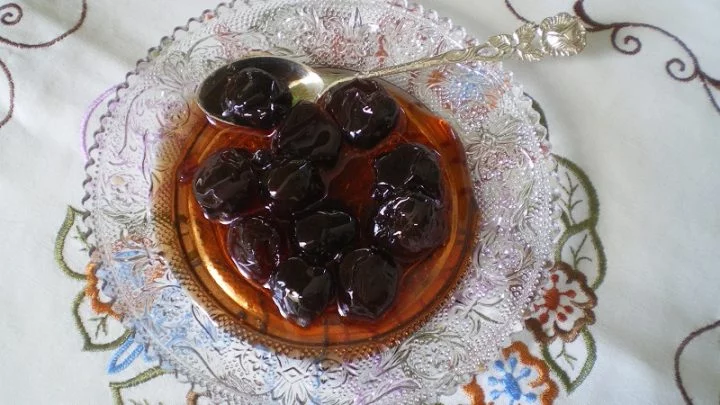
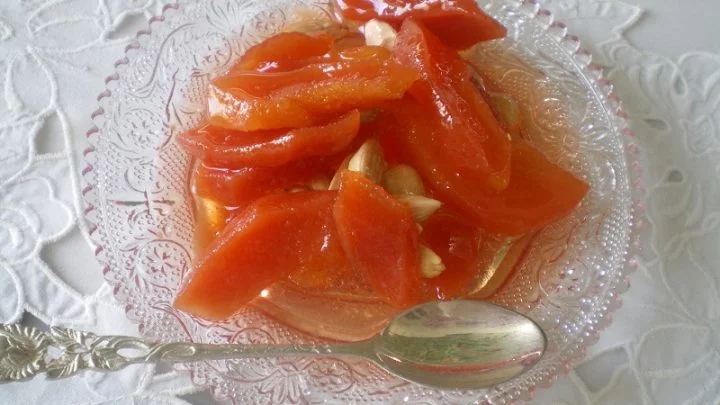
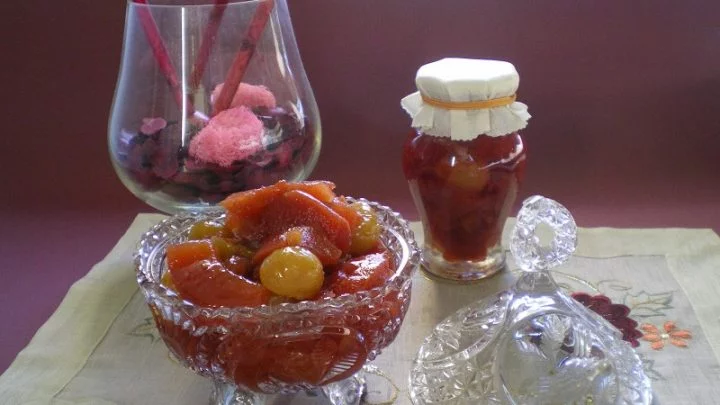
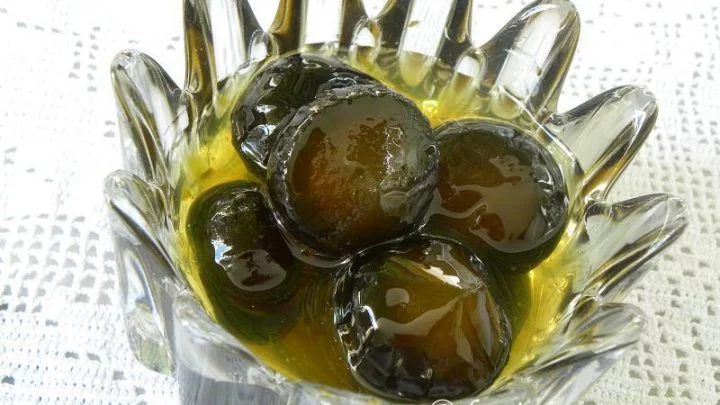
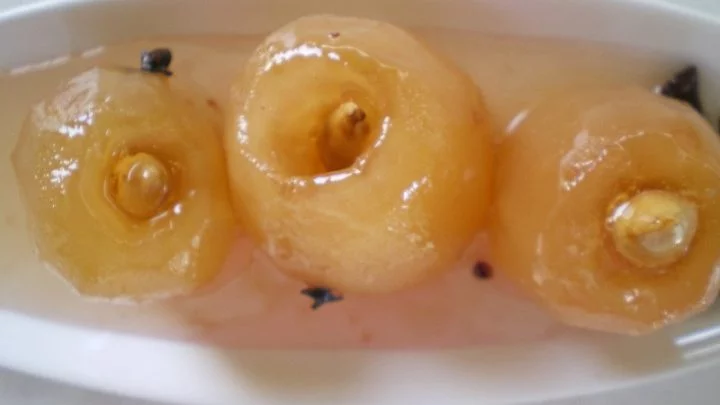
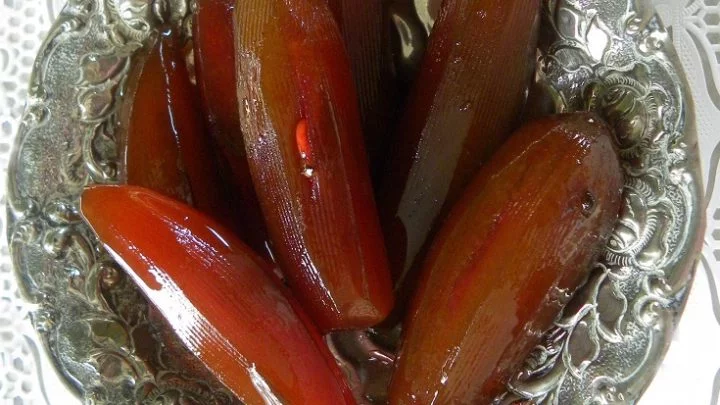
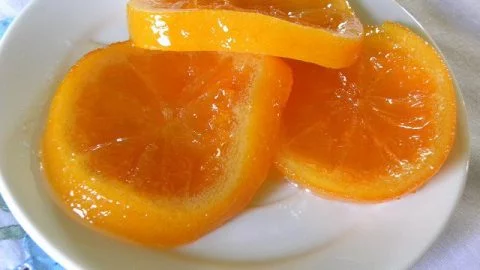
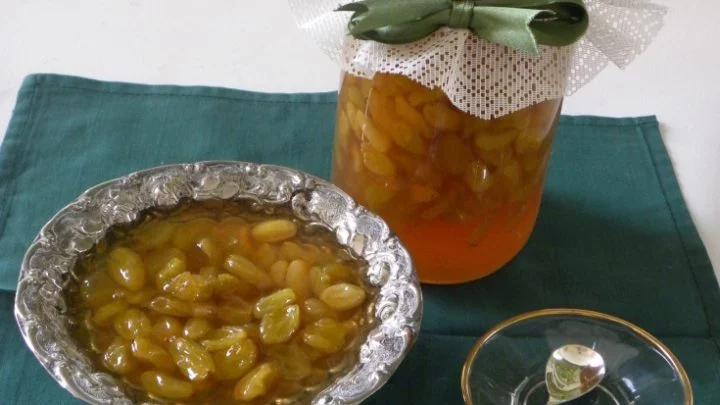
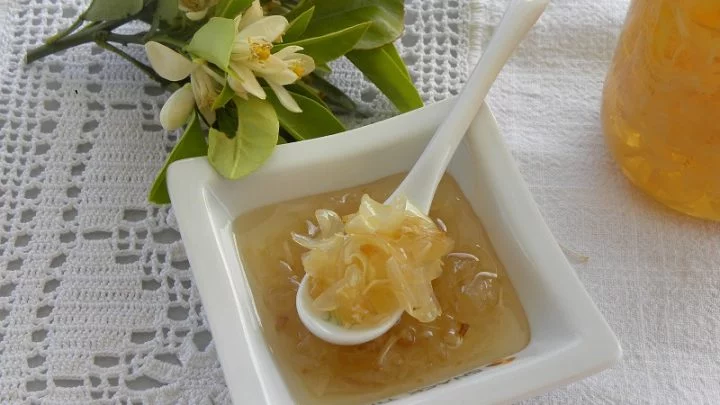
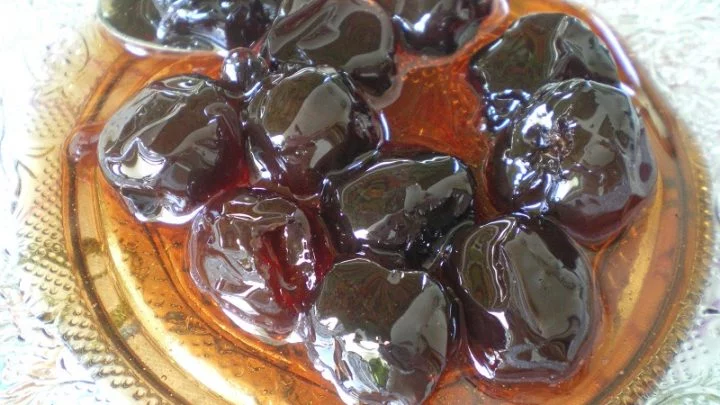
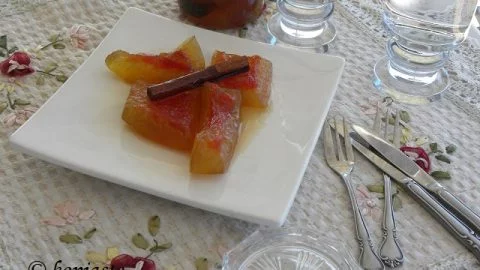
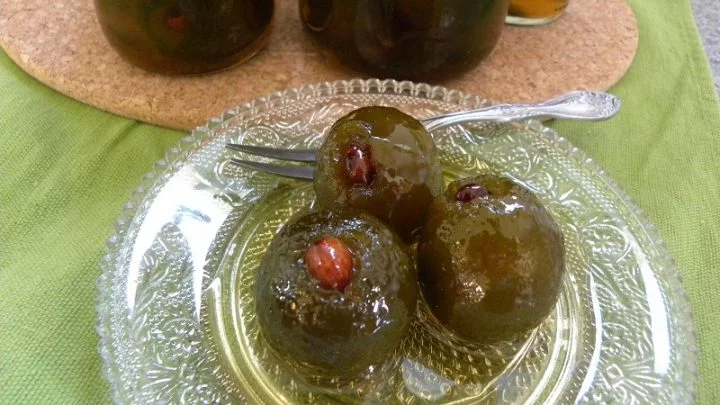
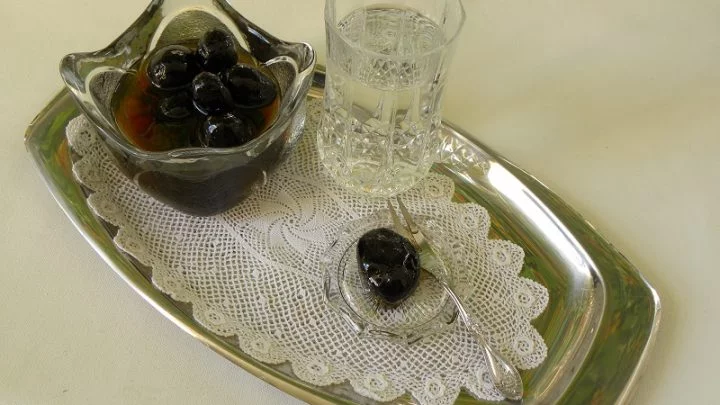
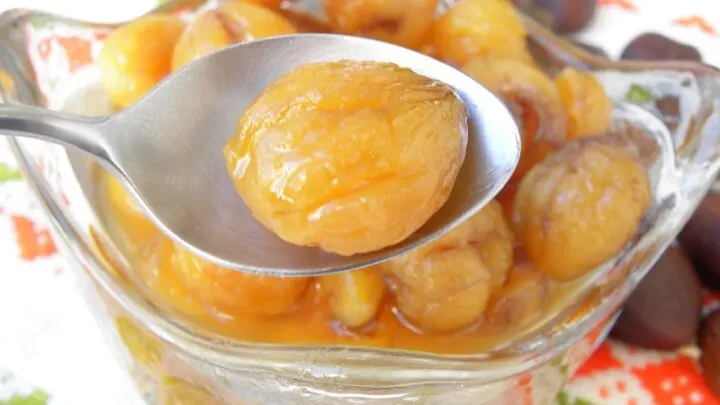
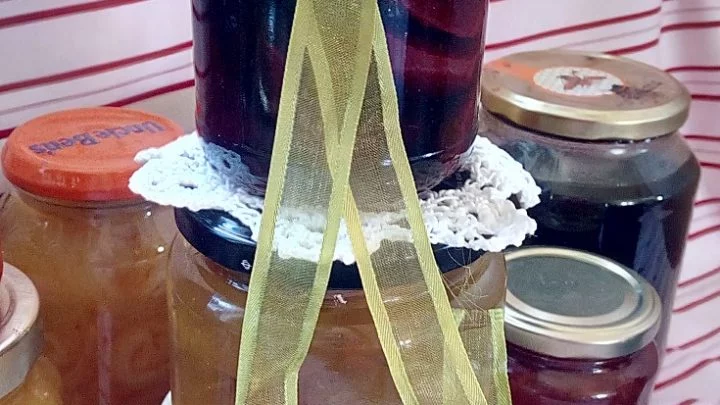
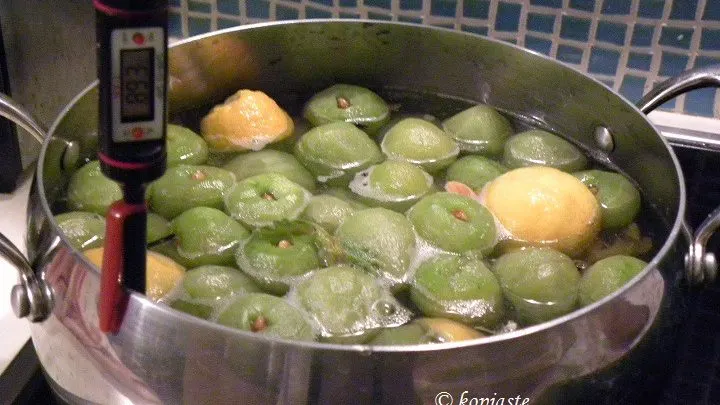
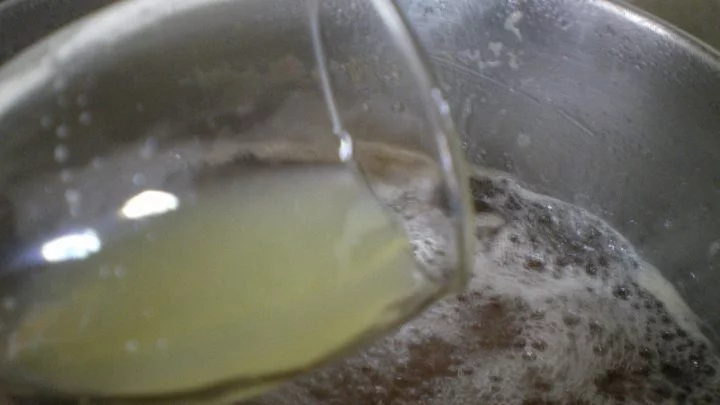
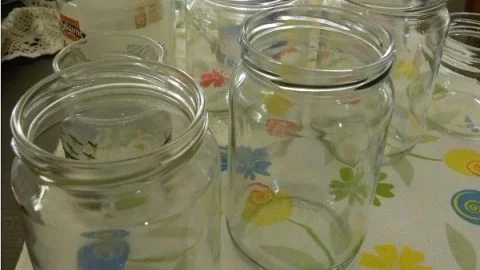

Foraging Green Walnuts (& Green Walnut Recipes)
Monday 28th of June 2021
[…] Greece, this is known as Glyko Karydaki, and the recipe is a bit tricky. Not only do you need to peel each nut, but it also involves the use of pickling lime (as in […]